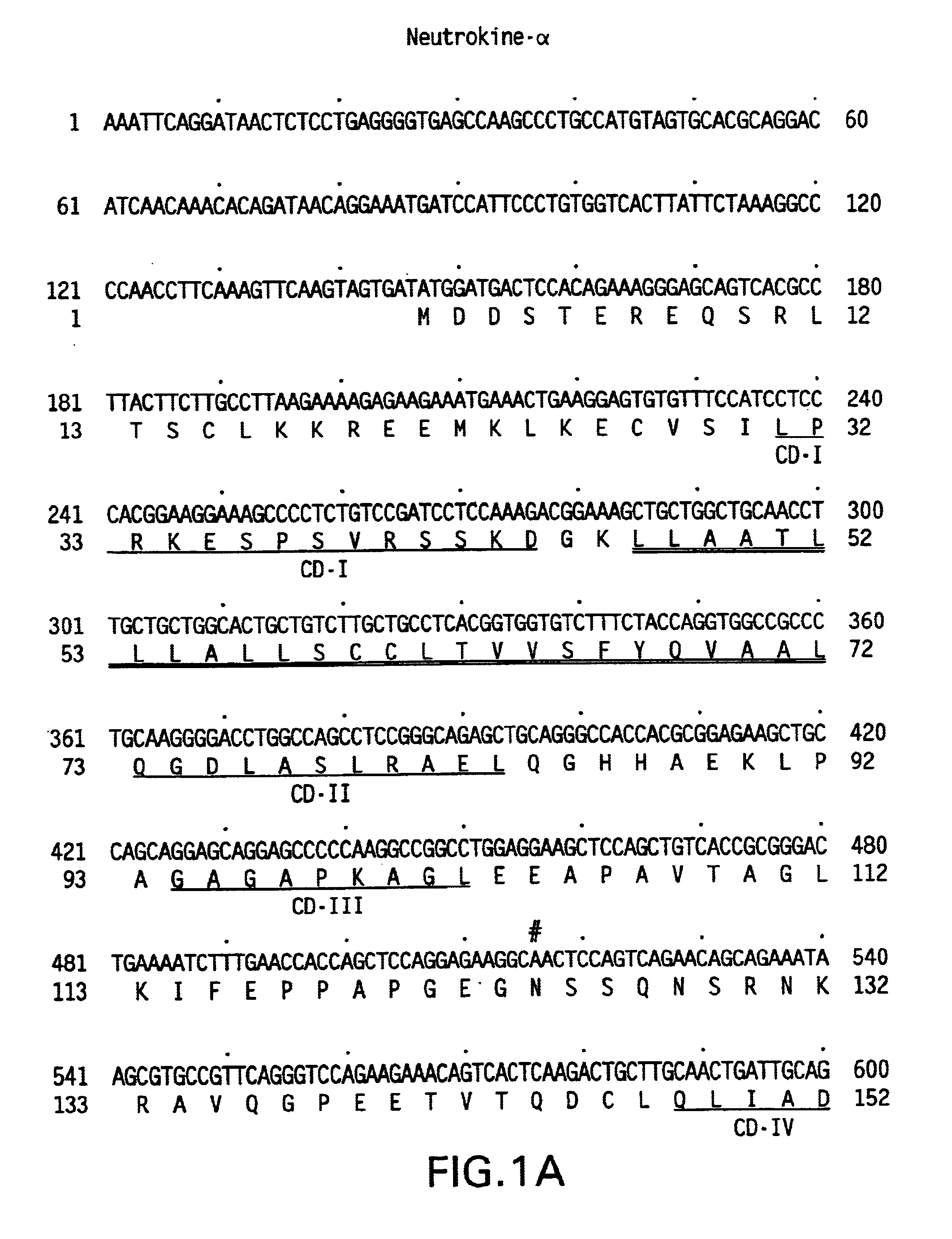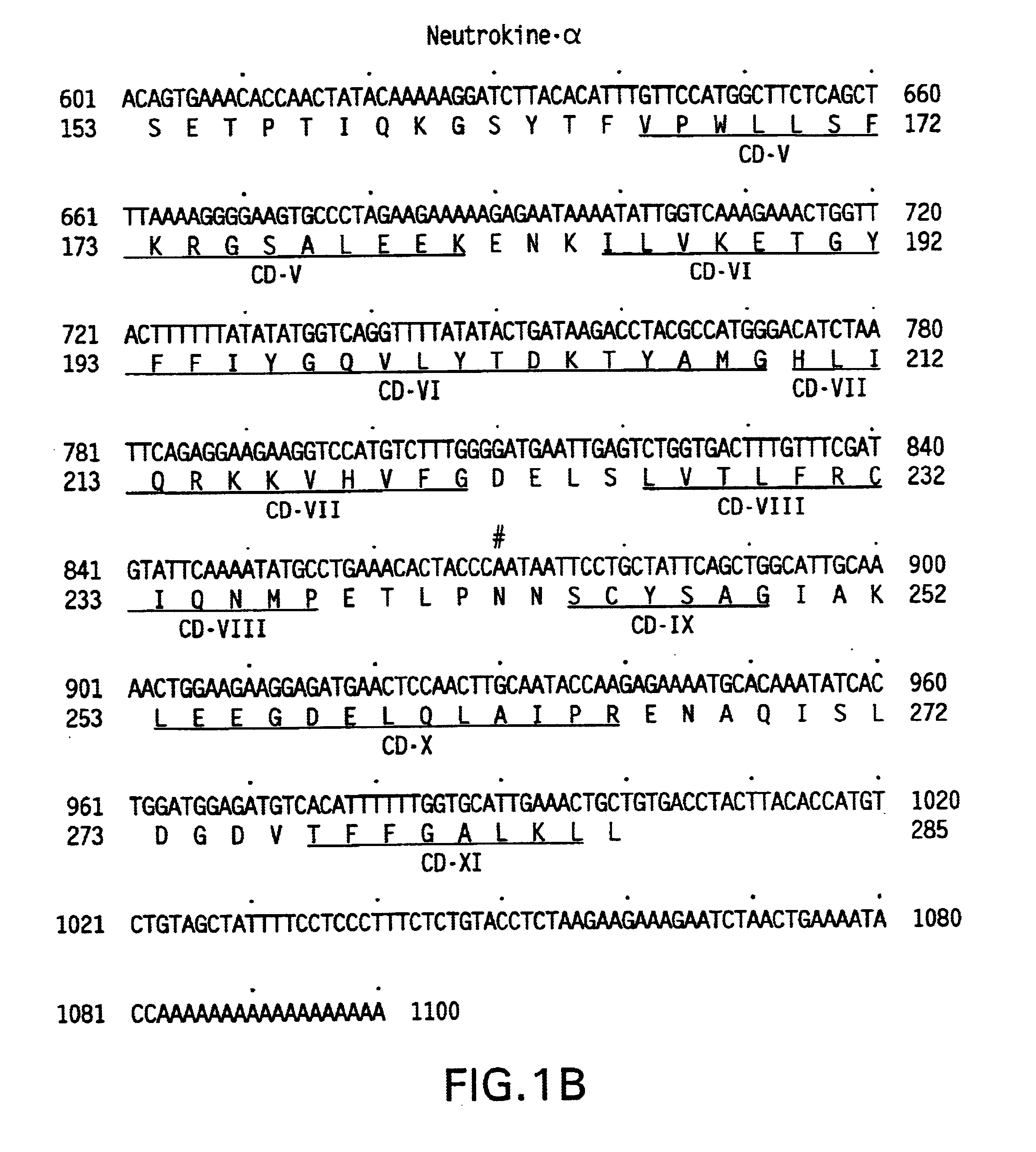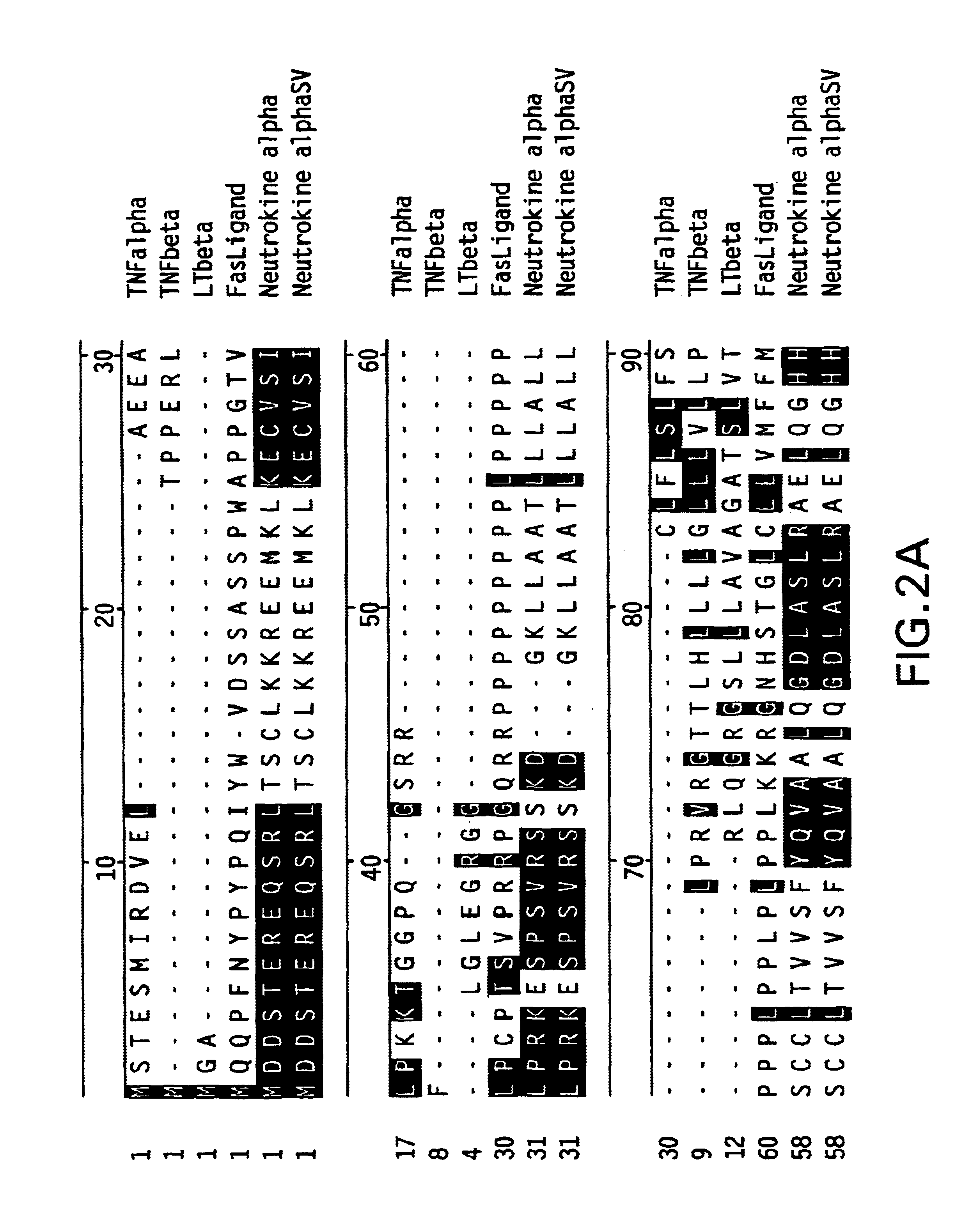Method of assaying Neutrokine-alpha mRNA level
a neutrokine-alpha and level technology, applied in animal/human proteins, animal sources, peptide/protein ingredients, etc., can solve the problems of inability to produce tnf neutralizing antibodies that can be used in in vivo diagnostic or therapeutic uses in humans, apoptosis of cells, and weight loss of cancer patients
- Summary
- Abstract
- Description
- Claims
- Application Information
AI Technical Summary
Benefits of technology
Problems solved by technology
Method used
Image
Examples
example 1a
Expression and Purification of "His-tagged" Neutrokine-.alpha. in E. coli
The bacterial expression vector pQE9 (pD10) is used for bacterial expression in this example. (QIAGEN, Inc., supra). pQE9 encodes ampicillin antibiotic resistance ("Ampr") and contains a bacterial origin of replication ("ori"), an IPTG inducible promoter, a ribosome binding site ("RBS"), six codons encoding histidine residues that allow affinity purification using nickel-nitrilo-tri-acetic acid ("Ni-NTA") affinity resin sold by QIAGEN, Inc., supra, and suitable single restriction enzyme cleavage sites. These elements are arranged such that an inserted DNA fragment encoding a polypeptide expresses that polypeptide with the six His residues (i.e., a "6.times.His tag") covalently linked to the amino terminus of that polypeptide.
The DNA sequence encoding the desired portion of the Neurokine-a protein comprising the extracellular domain sequence is amplified from the deposited cDNA clone using PCR oligonucleotide pr...
example 1b
Expression and Purification of Neutrokine-a in E. coli
The bacterial expression vector pQE60 is used for bacterial expression in this example. (QIAGEN, Inc., 9259 Eton Avenue, Chatsworth, Calif., 91311). pQE60 encodes ampicillin antibiotic resistance ("Ampr") and contains a bacterial origin of replication ("ori"), an IPTG inducible promoter, a ribosome binding site ("RBS"), six codons encoding histidine residues that allow affinity purification using nickel-nitrilo-tri-acetic acid ("Ni-NTA") affinity resin sold by QIAGEN, Inc., supra, and suitable single restriction enzyme cleavage sites. These elements are arranged such that a DNA fragment encoding a polypeptide may be inserted in such as way as to produce that polypeptide with the six His residues (i.e., a "6.times.His tag") covalently linked to the carboxyl terminus of that polypeptide. However, in this example, the polypeptide coding sequence is inserted such that translation of the six His codons is prevented and, therefore, the...
example 2
Cloning and Expression of Neutrokine-a Protein in a Baculovirus Expression System
In this illustrative example, the plasmid shuttle vector pA2GP is used to insert the cloned DNA encoding the extracellular domain of the protein, lacking its naturally associated intracellular and transmembrane sequences, into a baculovirus to express the extracellular domain of the Neurokine-a protein, using a baculovirus leader and standard methods as described in Summers et al., A Manual of Methods for Baculovirus Vectors and Insect Cell Culture Procedures, Texas Agricultural Experimental Station Bulletin No. 1555 (1987). This expression vector contains the strong polyhedrin promoter of the Autographa californica nuclear polyhedrosis virus (ACMNPV) followed by the secretory signal peptide (leader) of the baculovirus gp67 protein and convenient restriction sites such as Bam HI, Xba I and Asp 718. The polyadenylation site of the simian virus 40 ("SV40") is used for efficient polyadenylation. For easy s...
PUM
 Login to View More
Login to View More Abstract
Description
Claims
Application Information
 Login to View More
Login to View More - R&D
- Intellectual Property
- Life Sciences
- Materials
- Tech Scout
- Unparalleled Data Quality
- Higher Quality Content
- 60% Fewer Hallucinations
Browse by: Latest US Patents, China's latest patents, Technical Efficacy Thesaurus, Application Domain, Technology Topic, Popular Technical Reports.
© 2025 PatSnap. All rights reserved.Legal|Privacy policy|Modern Slavery Act Transparency Statement|Sitemap|About US| Contact US: help@patsnap.com



